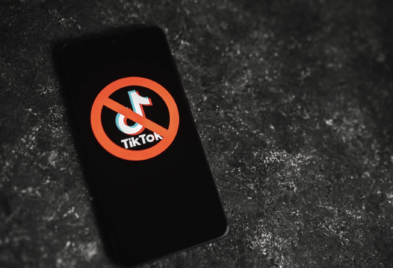Receiving notifications and/or emails about your meta business page being deactivated? This could be one of the many ways scammers are now trying to take advantage of you.
Having an online presence through platforms like Facebook can be immensely beneficial for personal branding and business growth. However, scammers have found ways to exploit this avenue, sending fraudulent activation messages that look convincing. These scams can be particularly tricky to identify, especially when they manage to bypass spam filters. To protect yourself from falling into their traps, it’s crucial to be aware of the telltale signs that can help you differentiate a legitimate activation message from a scam.
One key aspect to pay attention to is the sender’s email address. In many instances, scammers use email addresses that have nothing to do with the actual platform, like Meta or Facebook. These addresses might come from unrelated companies or services, and they often appear overly long or disposable. Always double-check the sender’s email address before proceeding further.
Another red flag is the language and wording of the message. While scammers are becoming more skilled at crafting convincing messages, there are often subtle signs that indicate their true intentions. Poor grammar, awkward phrasing, or overly formal language can be indicators that the message might not be genuine.
Perhaps the most critical factor to assess is the links provided in the message. Scammers frequently include links that lead to malicious websites or fake login pages. To verify the authenticity of a link without clicking on it, right-click (or hold and copy on a mobile device) to copy the link, and then paste it into a text editor. If the link doesn’t direct you to the platform it claims to be from, like Meta or Facebook, it’s a clear sign of a scam.
In a recent example involving a Meta page scam, recipients were directed to a link that didn’t lead to Facebook or Meta, but rather to an unrelated website for building web-based apps. This mismatch between the claimed source and the actual link is a major giveaway of a scam.
But what if you accidentally click on a scam link? Scammers often create fake support pages or login screens that mimic genuine ones. These fake pages are designed to trick you into entering your personal information. If you find yourself on such a page, closely examine the details. Look for inconsistencies, such as non-functioning links, missing information, or unusual design elements. These discrepancies can help you confirm that you’re dealing with a scam.
If you’re asked to provide personal information, such as your name, email, and phone number, pause and reconsider. Legitimate platforms typically don’t require you to input such information through unsolicited activation messages. Furthermore, submitting this information could lead to unwanted follow-up communication from scammers.
Remember, scams like these can be elaborate, but they often rely on tricking you into taking certain actions. By staying vigilant and following these guidelines, you can avoid falling victim to such scams. Always verify the sender’s email address, inspect links before clicking on them, and be cautious when providing personal information. When in doubt, log in to the platform directly to check the validity of any claims or warnings.
In the digital age, maintaining an online presence has become crucial for personal branding, networking, and business growth. Social media platforms like Facebook offer an excellent avenue for individuals and businesses to connect with their audiences. However, with the rise in online interactions, scammers have found innovative ways to exploit this medium, often leaving individuals vulnerable to their deceitful tactics. One concerning trend involves scam activation messages that manage to bypass spam filters and land in users’ inboxes, posing a significant threat to their cybersecurity. In this blog post, we’ll explore the tactics scammers use and provide you with essential tips to identify and protect yourself from these scams.
- Analyzing the Sender’s Email Address
A primary step in identifying scam activation messages is examining the email address of the sender. Often, scammers use email addresses that are completely unrelated to the platform they claim to represent, such as Meta or Facebook. These email addresses might appear overly complicated or disposable, raising suspicion. Always remember to double-check the sender’s email address to ensure it matches the legitimate domain of the platform. This simple action can be a powerful tool in identifying potential scams.
- Decoding the Message Language
While scammers have become increasingly proficient at mimicking official correspondence, there are usually subtle cues in the language they use that reveal their true intentions. Poor grammar, awkward phrasing, or an excessively formal tone are indicators that the message might not be genuine. It’s important to pay attention to these linguistic nuances, as they can help you distinguish authentic communication from potential scams.
- Scrutinizing Links Before Clicking
One of the most critical aspects of identifying scam activation messages is evaluating the links embedded in the message. Scammers often include links that lead to malicious websites or fake login pages designed to steal your information. To verify the authenticity of a link without actually clicking on it, utilize the right-click (or hold and copy on mobile) function to copy the link and paste it into a text editor. If the link doesn’t direct you to the claimed platform, such as Meta or Facebook, it’s a red flag indicating a potential scam.
For example, in a recent Meta page scam, recipients were directed to a link that didn’t lead to the actual platform but rather to an unrelated website for creating web-based apps. This discrepancy between the purported source and the actual link serves as a clear indicator of fraudulent activity.
- Identifying Fake Support Pages and Forms
Scammers often create elaborate fake support pages and login screens that mimic the genuine ones of the targeted platform. These deceptive pages are designed to lure individuals into entering their personal information. If you find yourself on such a page, closely examine the details. Look for inconsistencies, such as non-functional links, missing information, or unusual design elements. These irregularities can provide valuable evidence that you’re dealing with a scam.
If you’re prompted to provide personal details like your name, email, and phone number, proceed with caution. Legitimate platforms rarely ask for sensitive information through unsolicited activation messages. Additionally, submitting this information could expose you to further communication from scammers, potentially leading to identity theft or other forms of cybercrime.
- Verifying Claims Through Direct Platform Access
In situations where you receive an activation message that raises doubts, take the extra step of logging into the platform directly. Legitimate warnings or notifications from platforms like Meta and Facebook are often reinforced when you log in. If a message claims your page is facing issues or violations, you can independently verify its accuracy by accessing the platform’s official interface.
In conclusion, safeguarding yourself from scam activation messages requires vigilance and attention to detail. By carefully analyzing the sender’s email address, decoding the language used in the message, scrutinizing embedded links, and identifying fake support pages, you can effectively shield yourself from falling victim to scams. Remember, scammers capitalize on deception and your actions are crucial in thwarting their efforts. Stay informed, stay cautious, and stay secure in your online interactions.





